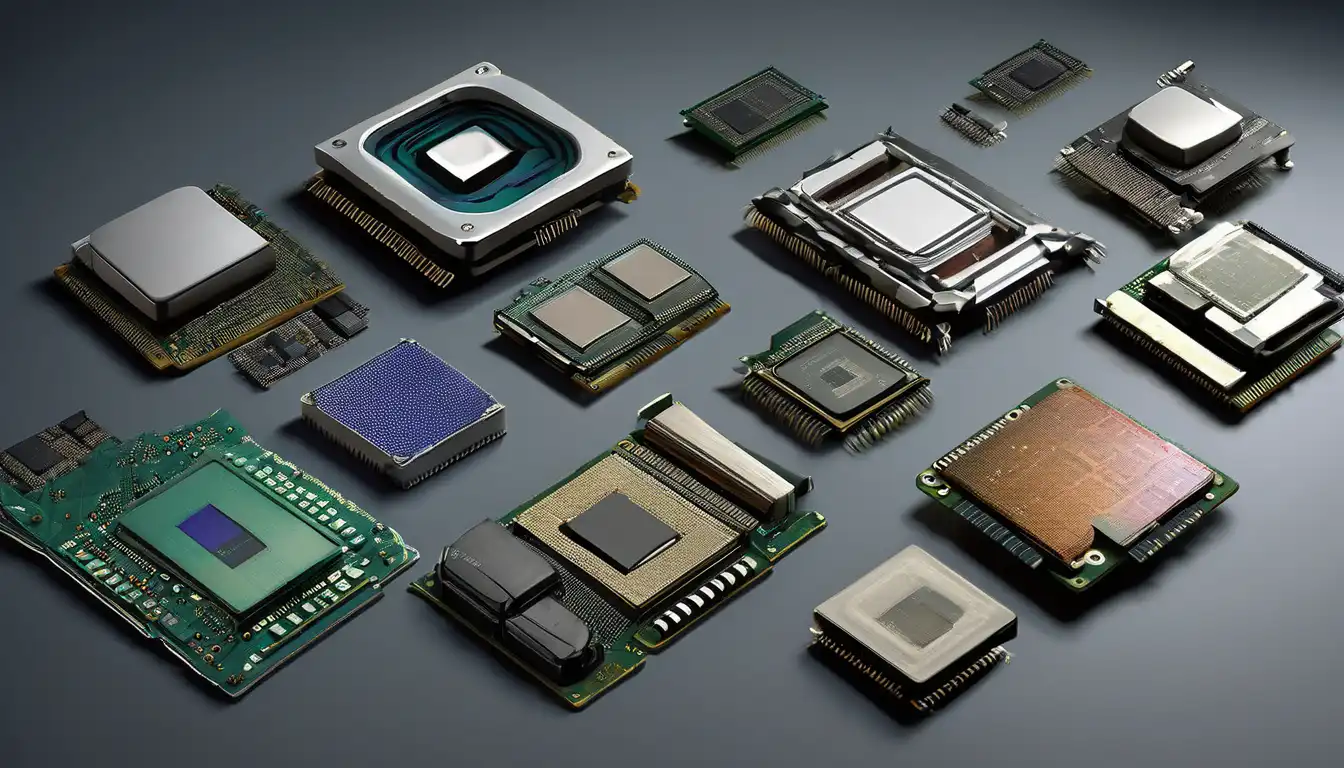The Dawn of Computing: Early Processor Technologies
The evolution of computer processors represents one of the most remarkable technological journeys in human history. Beginning with primitive vacuum tube systems in the 1940s, processors have undergone revolutionary changes that have fundamentally transformed how we live, work, and communicate. The first electronic computers, such as ENIAC, utilized thousands of vacuum tubes that consumed enormous amounts of power and required constant maintenance. These early processors operated at speeds measured in kilohertz, performing basic calculations that today's smartphones accomplish billions of times faster.
The Transistor Revolution
The invention of the transistor in 1947 marked a pivotal moment in processor evolution. These semiconductor devices replaced bulky vacuum tubes, offering smaller size, lower power consumption, and greater reliability. By the late 1950s, transistors had become the fundamental building blocks of computer processors, enabling the development of more compact and efficient computing systems. The transition to transistors paved the way for the second generation of computers, which saw significant improvements in processing speed and reliability while reducing physical size and power requirements.
The Integrated Circuit Era
The 1960s witnessed another breakthrough with the development of integrated circuits (ICs), which allowed multiple transistors to be fabricated on a single silicon chip. This innovation, pioneered by companies like Texas Instruments and Fairchild Semiconductor, dramatically increased processor complexity while reducing manufacturing costs. The introduction of ICs enabled the creation of third-generation computers that were more powerful, reliable, and affordable than their predecessors.
The Birth of Microprocessors
In 1971, Intel introduced the world's first commercially available microprocessor, the 4004. This 4-bit processor contained 2,300 transistors and operated at 740 kHz, representing a monumental achievement in miniaturization. The 4004 demonstrated that complex processing capabilities could be integrated onto a single chip, setting the stage for the personal computing revolution. Throughout the 1970s, processors evolved rapidly with the introduction of 8-bit microprocessors like the Intel 8080 and Zilog Z80, which powered the first generation of personal computers and home computing systems.
The x86 Architecture Dominance
The 1980s marked the rise of the x86 architecture with Intel's 8086 and 8088 processors, which became the foundation for IBM PC-compatible computers. This era saw processors transition from 16-bit to 32-bit architectures, with the Intel 80386 introducing protected mode operation and virtual memory support. The competitive landscape intensified as AMD emerged as a significant competitor, driving innovation and price competition in the processor market. The x86 architecture's dominance established compatibility standards that would influence processor design for decades to come.
The Clock Speed Race
During the 1990s, processor manufacturers engaged in an intense competition to achieve higher clock speeds. Intel's Pentium processors and AMD's K6 series pushed performance boundaries, with clock speeds increasing from tens of megahertz to multiple gigahertz by the decade's end. This period also saw the introduction of important architectural improvements, including superscalar execution, out-of-order processing, and enhanced floating-point capabilities. The relentless pursuit of higher clock speeds eventually faced physical limitations due to power consumption and heat generation challenges.
The Multi-Core Revolution
The early 2000s marked a fundamental shift in processor design philosophy as the industry transitioned from single-core to multi-core architectures. Faced with the limitations of increasing clock speeds, manufacturers began integrating multiple processing cores on a single chip. This approach allowed for improved performance through parallel processing while managing power consumption more effectively. Intel's Core 2 Duo and AMD's Athlon 64 X2 processors demonstrated the benefits of multi-core computing, enabling better multitasking capabilities and improved performance for parallelizable applications.
Specialized Processing Units
Modern processor evolution has seen increasing specialization with the integration of various processing units optimized for specific tasks. Graphics Processing Units (GPUs) have evolved from simple display controllers to powerful parallel processors capable of handling complex computational workloads. The rise of artificial intelligence and machine learning has driven the development of specialized AI accelerators and neural processing units (NPUs) that optimize performance for specific algorithms and workloads. This trend toward heterogeneous computing represents a significant departure from the one-size-fits-all approach of earlier processor designs.
Current Trends and Future Directions
Today's processor landscape is characterized by several key trends, including the continued scaling of transistor density through advanced manufacturing processes, the proliferation of heterogeneous computing architectures, and increasing focus on energy efficiency. The development of processors for mobile devices has driven innovations in low-power design, while cloud computing demands have fueled the creation of high-performance server processors optimized for specific workloads. The industry continues to push the boundaries of Moore's Law through three-dimensional transistor designs and advanced packaging technologies.
Quantum and Neuromorphic Computing
Looking toward the future, processor evolution is exploring fundamentally new computing paradigms. Quantum processors leverage quantum mechanical phenomena to perform calculations that would be impractical for classical computers. While still in early stages of development, quantum processors show promise for solving complex optimization problems and simulating quantum systems. Similarly, neuromorphic computing aims to create processors that mimic the structure and function of biological neural networks, potentially offering more efficient solutions for pattern recognition and AI applications. These emerging technologies represent the next frontier in processor evolution, promising to redefine computing capabilities in the coming decades.
The journey of processor evolution demonstrates remarkable technological progress, from room-sized vacuum tube systems to nanometer-scale integrated circuits containing billions of transistors. Each generation of processors has built upon the innovations of its predecessors while introducing new architectural concepts and manufacturing techniques. As we look to the future, the continued evolution of computer processors will undoubtedly play a crucial role in shaping technological progress across all sectors of society. The relentless pursuit of faster, more efficient, and more capable processing continues to drive innovation in computing technology.
